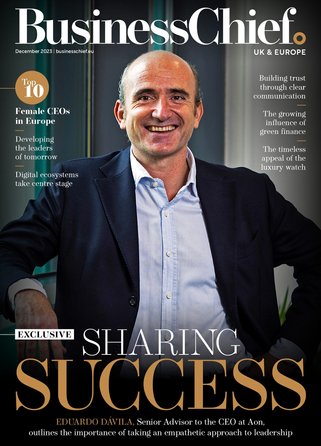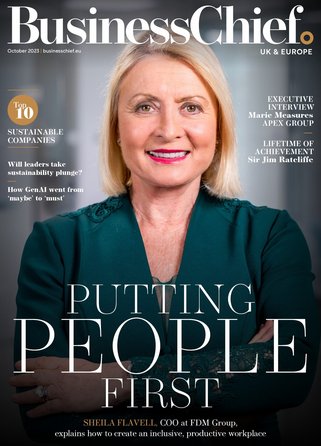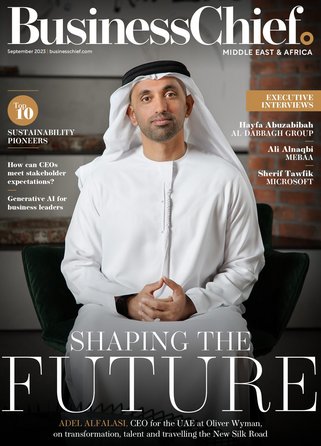Red Hat UAE: embracing digital culture

Business Chief Middle East speaks to Lee Miles, VP, CEMEA Region, Red Hat, to discuss the impact of digital culture in the UAE.
“The Middle East is a hub for innovation and forward thinking,” comments Lee Miles, VP, CEMEA Region, Red Hat. “There is never a shortage of new ideas emerging in the technology space. The increasing adoption of DevOps application development methodologies, and use of automation and optimisation to make IT infrastructure more cost effective, are becoming relevant across many major industries.”
Currently in the UAE, the region is undertaking the major National Innovation Strategy to become one of the most innovative nations in the world by 2021. Established to enhance the country’s national strategy, “Ghadan 21 is a bold initiative that will strengthen the emirate’s competitiveness in the years to come. Digital culture will have a strong impact towards the knowledge and innovation tenet of the government-driven accelerator program. We also expect open source initiatives to be a major factor contributing to faster, more scalable and cost effective ways for the program to deliver digital infrastructure that will empower economic and social progress,” says Miles.
Digital transformation is a broad term that is being used to address innovation strategies and initiatives being implemented around the world. “Moving forward, digital culture will have a greater impact as more specific use cases and applications of digital transformation are implemented and adopted,” comments Miles. “Take healthcare as an example, where the use of technology is allowing for innovation in diagnosis and treatments to save lives every day.”
Digital culture enhancing customer experience
When it comes to the success and efficiency of digital culture and innovation, “end user experience is becoming the digital barometer,” says Miles. “Sectors are developing innovative ways to work in smarter, more connected ecosystems. In the digital economy, the experience dividend is projected to provide seamless touchpoints across physical and digital services for end users, as well as enable enterprise and government sectors to harness enhanced decision-making capabilities in order to provide more enriched customer-orientated outcomes.”
Miles highlights that this trend has been adopted within Red Hat’s business model. “The open source way of thinking and transforming business at Red Hat is centered on delivering solutions to clients that enable them to reduce pain points within their architecture, in addition to creating pathways to plan and deploy solutions that solve the challenges of the digital service experience. One of our successful examples is a collaboration with Emirates NBD to create an enterprise distributed, private cloud platform. The platform serves as a Launchpad to offer customers more personalised, always-on, digital banking services. In addition, the platform has future proofing flexibility to accommodate the bank’s future hybrid cloud strategy.”
The bank’s shift to open banking has been supported by cloud-native, microservices-based architecture that enable it to externalise its APIs to offer new services, giving customers the ability to interact with the bank via chats, for instance. In addition, Red Hat 3scale API Management helps the bank to mitigate security risks and protect sensitive data. “By combining Red Hat technologies with agile business practices, Emirates NBD can spend more time enhancing customer experiences and accelerating innovation,” comments Miles.
SEE ALSO:
Digital culture and its impact on employment, employees and workplace culture
Within any company “knowledge, processes, and habits are shared within cultures to define businesses and influence success,” says Miles. “While there is intense pressure on organisations to enhance their digital footprint in these disruptive times, it must be emphasised that digital cultures starts within. Organisations need to foster and nurture digital attitudes and habits in order to reap the benefits of digital cultures later down the line.”
When it comes to Red Hat’s digital culture, “it is open by default,” notes Miles. “Every element of our open source ethos is geared towards unlocking open source innovation through an ecosystem of collaborators that value transparency, inclusivity, adaptability, collaboration, and community. This organic approach to work and leadership creates the ideal environment that empowers employees to speak up openly and freely when it comes to ideation.”
What is Red Hat?
Founded in 1993 to revolutionise operating systems, Miles emphasises that Red Hat has a unique open organisation approach. “Jim Whitehurst authored a book in 2017 called ‘Open Organisation’ in which he outlined the unique qualities that Red Hat has, namely meritocracy. We thrive on the best idea regardless of who it has come from in the organisation. We open source many of the decisions within the organisation, allowing internal and external input, to ensure we have the most diverse and high quality points to review. As a result, this fosters an environment of high collaboration across teams and functions within the business, allowing Red Hat to make, in our opinion, better decisions.”
Red Hat has a broad portfolio including; hybrid cloud infrastructure, middleware, agile integration and cloud-native application development, management solutions and automation solutions. With Red Hat technology, companies can successfully adapt to become more digital and interconnected.
Ultimately, the company’s vision is to be the defining technology company of the 21st century. Through our actions we aim to strengthen the social fabric by continually democratising content and technology,” concludes Miles.
For more information on business topics in the Middle East and Africa, please take a look at the latest edition of Business Chief MEA.



